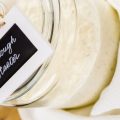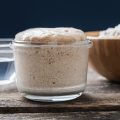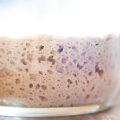Before baking sourdough bread, one must understand the importance of a mature sourdough starter. Why it is a requirement in sourdough baking? Here’s everything you need to know before your bake!
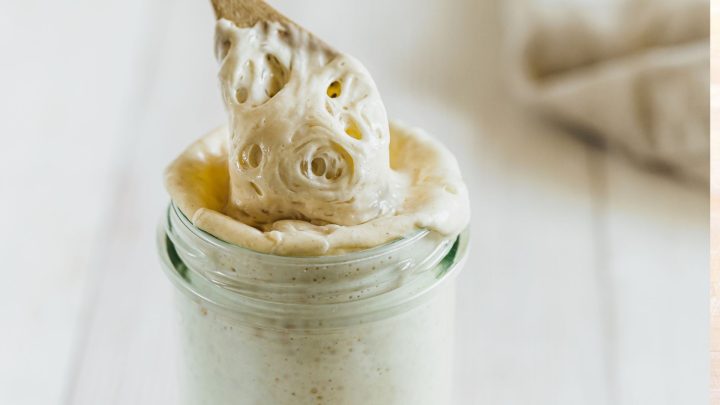
Table of Contents
- What is a Sourdough Starter?
- How to Make a Good Sourdough Starter?
- So What is a Mature Sourdough Starter?
- Mature Sourdough Starter FAQs
What is a Sourdough Starter?
A sourdough starter is a combination of flour and water that is fermented at room temperature. Wild yeast and bacteria swarm the sourdough starter and feed on the flour, which is why your starter will require regular feedings so that it doesn’t get hungry.
A sourdough starter should typically be fed at regular 6-12 hour intervals, or twice a day, to become well established. Once the starter is ready, a small portion of it is added to your bread dough to create a good rise and provide unique flavors to your loaves.
Recipes that call for a sourdough starter do not need commercial yeast.
How to Make a Good Sourdough Starter?
There’s more than one way to develop a strong and active sourdough starter. You can use a variety of flour blends to judge which works best for your starter.
However, to make a great starter you also have to consider the: fermentation temperature, hydration level, feeding schedule, and feeding ratio.
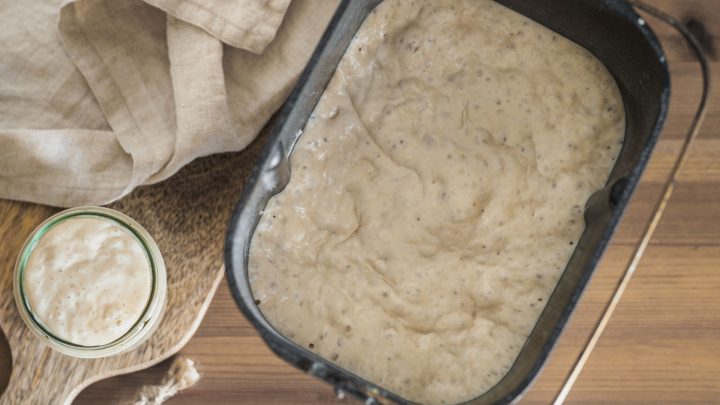
Hydration Level
To make your own sourdough starter with 100% hydration you’ll need to combine equal parts flour and water. Although you can certainly control the level of hydration. For instance, you could choose to mix in half as much water as flour to make a 50% hydrated starter.
If it’s your first time working with a sourdough starter, then I’d recommend starting with a 100% hydrated starter i.e., equal parts flour and water.
A starter at 100% hydration is one of the most common types of starters to use. Mainly because they’re easy to maintain, easy to add to the dough, and easier for including additions to a bread recipe. When it comes to low-hydrated starters, you’ll find that they require more maintenance and are harder to incorporate into doughs.
Furthermore, wetter starters devour the supply of starches rapidly, therefore requiring regular feeding and attention.
Starter Batch Size
You only need a small amount of fresh flour to get started. Though you must ensure that you are using enough to judge how much your starter is rising.
Ensure that your starter mixture fills the bottom of your container so that you can clearly see how much it has risen.
Feeding Schedule
As the bacteria and yeasts feed on the starter, the flour’s sugars eventually run out. At this point, your starter will need to be fed once again. Once your starter is mature, you’ll want to feed it once it achieves maximum height i.e., it has doubled or tripled in volume. But during the earlier stages, it is quite impossible to judge whether your starter has peaked or not. Which is why it’s best to stick to consistent feeding and constant monitoring.
You should aim to refresh your starter every 12 hours.
Feeding Ratio
Bakers like to use an X:Y:Z reference to feeding, where X is the amount of starter, Y is the amount of flour, and Z is the amount of water. Normally, these ratios can range from 1:1:1 to 1:10:10, with the higher the ratio the more you’re feeding your starter. Increasing feeding ratios is a great way to ensure your starter remains fed and doesn’t peak too early. Though, you must make sure that you are only feeding your starter once it has reached its peak. Feel free to adjust the feeding ratios to suit what works for you.
You can begin with a 1:1:1 ratio, then adjust to somewhere in between at later feedings.
Discarding
In sourdough terms, bakers may refer to “discard” as a portion of fermented starter that must be removed or “discarded” before each feeding. This helps keep the remaining starter more manageable, as opposed to an overflowing and overbearing mess.
For instance, if your starter weighed 40 grams and you didn’t discard any of it, rather continued to feed it 1:1:1, it would weigh more than 120 grams after a single feeding session. Eventually, it would begin to overflow out of the jar, and you’ll soon be staring at a giant gooey mess.
Discarding your starter also helps provide complete control over the feeding ratio, meaning that you weigh out the exact amount of starter you want along with your flour and water.
You can easily save some discard in your sourdough baking and use it to bake some delicious sourdough discard recipes like discard pancakes, cookies, and muffins.
However, you must ensure that you only keep a ripe starter discard, as opposed to any discard collected from a new starter. This kind of discard is unsafe to consume, and could make you sick.
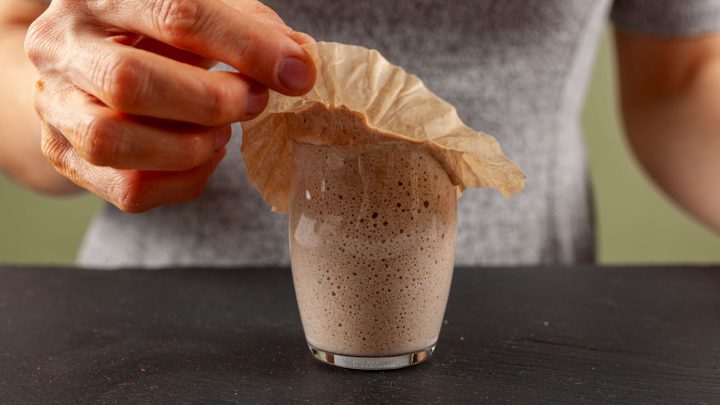
Types of Flour
Before feeding and scheduling, the most important component in the development of your starter is the flour. There are several types of flour to go for, ranging from wheat flour to cereal grains.
Here are some of the best kinds of flour to use in your sourdough starter recipe:
- Unbleached all-purpose flour: The protein content of all-purpose flour ranges between 9-12% depending on the brand of flour. Most of the time you can get away with any type of all-purpose flour, though the higher the protein, the closer it will be to bread flour, which is great as this can lead to a higher rise during baking.
- Unbleached bread flour: Unbleached bread flour contains 12-14% of protein, which is great for sourdough bread baking, especially if you’re looking for a nice rise.
- Whole wheat flour: Whole wheat flour includes the entire grain of wheat including the bran, endosperm, and germ. It is also packed with nutrients and microbes potentially providing a rapid fermentation rate.
- Rye flour: Rye flour is naturally brimming with amylases, nutrients, and microbes that work well in sourdough starters. Rye has lower gluten protein content compared to wheat flour, producing a stickier and slack dough.
- Flour blends: The great thing about sourdough starters is that you don’t have to stick to one type of flour. Many bakers use a blend of flours to achieve starters with good consistency and flavor. For instance, you can blend 10% rye with 90% bread flour.
Type of Liquid
While most people use water as their liquid base for their starters, it’s important to note that you mustn’t use chlorinated water.
Chlorine will kill the yeasts and bacteria, therefore affecting fermentation. The best way to avoid this is by using bottled or filtered water.
Temperature
Temperature influences the level of fermentation activity in your starter. Mature starters can survive and grow over a wide range of temperatures, from 41 degrees Fahrenheit to 113 degrees F. Though most bakers prefer to ferment their starter at room temperature on the kitchen counter.
So What is a Mature Sourdough Starter?
Your starter must reach its peak before each feed, and the only way to succeed is through ensuring you’re sticking to the correct ratios, you’re using higher hydration, and remembering to feed your starter every 12 hours!
Mature Sourdough Starter FAQs
How do I Know If My Sourdough Starter is Mature?
You can find out whether your sourdough starter is mature or not through the subtle signs. A mature or “ripe” sourdough starter will have lots of visible bubbles, some of which rise to the surface of the starter jar. Your starter should also release a sour aroma, indicating its readiness.
Do Sourdough Starters Get Better With Age?
Yes. A mature starter will have an established colony of good bacteria, that will infuse your sourdough starter with a subtle, yet addicting sour flavor. As your starter matures it will develop a stronger flavor.
What Should a Mature Sourdough Starter Smell Like?
A mature sourdough starter may release a variety of smells, some of which are unique to your own starter. For instance, your sourdough starter may impart a fruity, or yeasty smell, while another may smell sour and fresh.
How do You Feed a Mature Sourdough Starter?
To feed your starter, simply add 113g of flour and 113g of water to the 113g of starter. Mix until you achieve a smooth consistency, and return this to a jar and cover. Repeat this process every 12 hours, and feed your starter twice a day.

